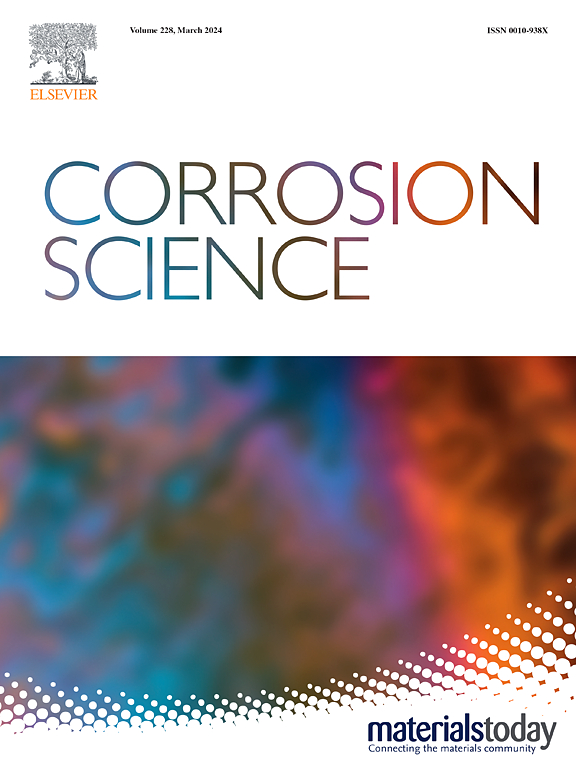Investigation on local dissolution and anti-corrosion characteristic of directed energy deposition (DED) CoCrMo-xCu alloys in marine environment
IF 7.4
1区 材料科学
Q1 MATERIALS SCIENCE, MULTIDISCIPLINARY
引用次数: 0
Abstract
This study investigates the result of copper addition on the microstructure, local dissolution, and anti-corrosion characteristic of DED CoCrMo-xCu alloys. The regulation mechanism of copper content on alloy properties was revealed by using EIS, cyclic polarization, and the Mott-Schottky test, along with microstructure characterization techniques including SEM, EBSD, EPMA, SKPM, TEM, and XPS. The results reveal that the addition of Cu enhances grain refinement, promotes a denser passive film, and causes improved corrosion resistance of CoCrMo-2Cu. However, excessive Cu content can lead to microstructure segregation increases and the stability of passive film reduces, resulting in local dissolution and decreasing of corrosion resistance. This study provides valuable insights into optimizing Cu content for CoCrMo alloys to improve their performance in marine environments, offering potential applications in structural materials and anti-fouling surfaces.
定向能沉积(DED) CoCrMo-xCu合金在海洋环境中的局部溶解及防腐特性研究
本研究考察了添加铜对DED CoCrMo-xCu合金的显微组织、局部溶解和抗腐蚀性能的影响。通过EIS、循环极化、Mott-Schottky测试以及SEM、EBSD、EPMA、SKPM、TEM和XPS等微观组织表征技术,揭示了铜含量对合金性能的调控机制。结果表明,Cu的加入增强了CoCrMo-2Cu的晶粒细化,促进了钝化膜的致密化,提高了CoCrMo-2Cu的耐蚀性。但Cu含量过高会导致微观组织偏析增加,钝化膜稳定性降低,导致局部溶解,耐蚀性下降。该研究为优化CoCrMo合金的Cu含量以提高其在海洋环境中的性能提供了有价值的见解,为结构材料和防污表面提供了潜在的应用。
本文章由计算机程序翻译,如有差异,请以英文原文为准。
求助全文
约1分钟内获得全文
求助全文
来源期刊

Corrosion Science
工程技术-材料科学:综合
CiteScore
13.60
自引率
18.10%
发文量
763
审稿时长
46 days
期刊介绍:
Corrosion occurrence and its practical control encompass a vast array of scientific knowledge. Corrosion Science endeavors to serve as the conduit for the exchange of ideas, developments, and research across all facets of this field, encompassing both metallic and non-metallic corrosion. The scope of this international journal is broad and inclusive. Published papers span from highly theoretical inquiries to essentially practical applications, covering diverse areas such as high-temperature oxidation, passivity, anodic oxidation, biochemical corrosion, stress corrosion cracking, and corrosion control mechanisms and methodologies.
This journal publishes original papers and critical reviews across the spectrum of pure and applied corrosion, material degradation, and surface science and engineering. It serves as a crucial link connecting metallurgists, materials scientists, and researchers investigating corrosion and degradation phenomena. Join us in advancing knowledge and understanding in the vital field of corrosion science.
 求助内容:
求助内容: 应助结果提醒方式:
应助结果提醒方式:


